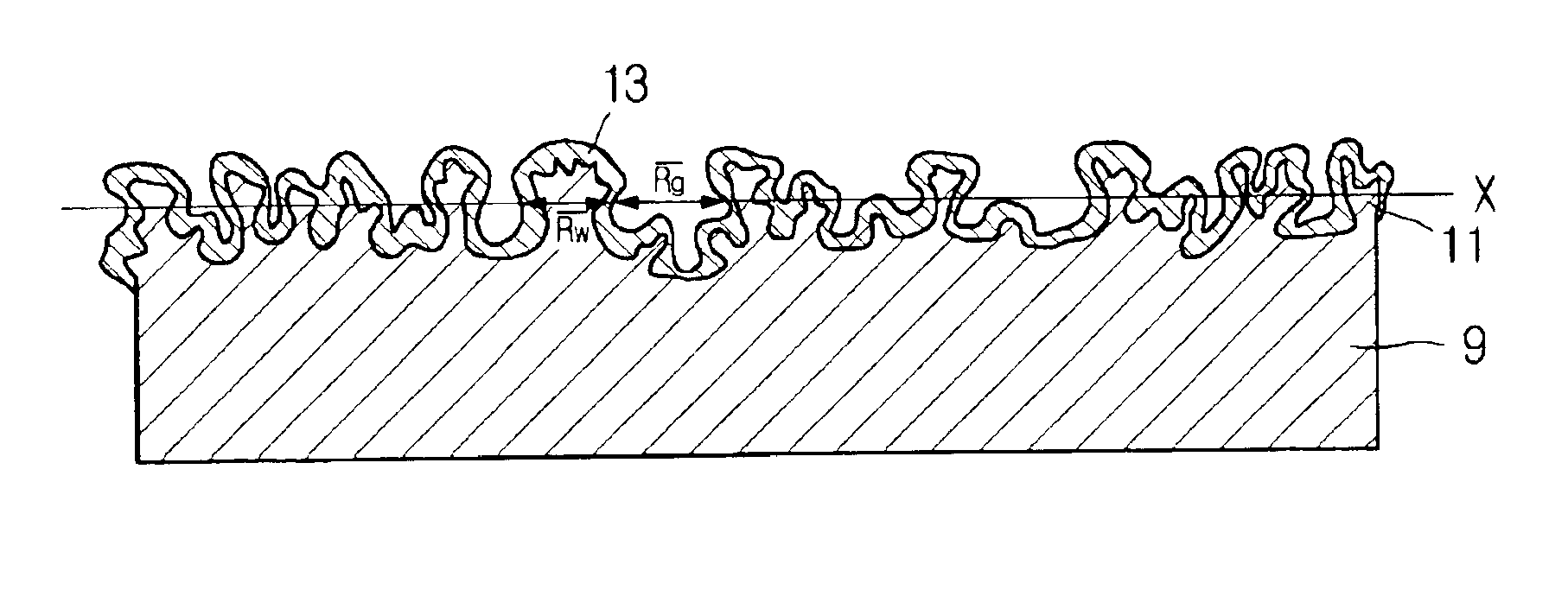Electrical device having PTC conductive polymer
- Summary
- Abstract
- Description
- Claims
- Application Information
AI Technical Summary
Benefits of technology
Problems solved by technology
Method used
Image
Examples
experimental example
[0054]The electrical devices manufactured according to the embodiments 1 to 7 and the comparative examples 1 to 5 are measured for (1) Peel Strength, (2) Resistance according to PTC conductive polymer thickness, (3) Breakdown Voltage according to PTC conductive polymer thickness, (4) Resistance after Humidity Aging Test according to PTC conductive polymer thickness, and (5) Resistance after Solder Heat Withstand Test according to PTC conductive polymer thickness, and measured results are shown in Table 1.
[0055]At this time, Peel Strength is obtained by measuring peak strength in separation in order to measure mechanical binding force between the conductive polymer sheet and the electrode. Resistance of PTC electrical device is increased or decreased according to the thickness of the conductive polymer sheet, so the measured resistance is divided by the thickness of the conductive polymer sheet in order to remove the dependence on the thickness of the conductive polymer sheet. In the...
PUM
 Login to View More
Login to View More Abstract
Description
Claims
Application Information
 Login to View More
Login to View More - R&D
- Intellectual Property
- Life Sciences
- Materials
- Tech Scout
- Unparalleled Data Quality
- Higher Quality Content
- 60% Fewer Hallucinations
Browse by: Latest US Patents, China's latest patents, Technical Efficacy Thesaurus, Application Domain, Technology Topic, Popular Technical Reports.
© 2025 PatSnap. All rights reserved.Legal|Privacy policy|Modern Slavery Act Transparency Statement|Sitemap|About US| Contact US: help@patsnap.com


